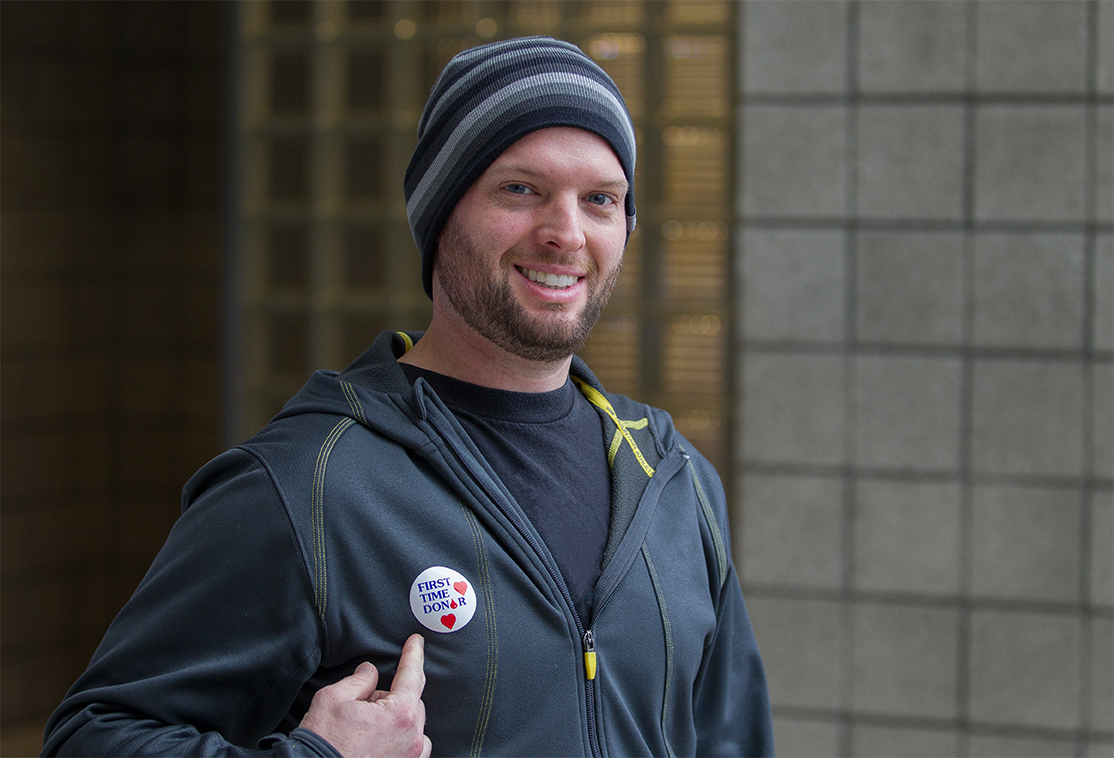
Where does my blood go?
It’s my first-time donating blood. I walk into Stanford Blood Center (SBC) and I don’t know what to expect. I am a bit nervous because I’m not a big fan of needles, but I know I’m doing this for a good cause. I am greeted by the front desk staff and registered as a new donor with SBC. After completing a brief questionnaire about my health, lifestyle, and recent travel I sit down with a technician who goes over the blood donation process with me. I am pricked with a tiny little device and they check my iron levels to make sure I am okay to donate.
I can! I am ushered to a chair, and a team of care providers help me to get settled. I’m given water and invited to relax and recline. The care team can tell that I am nervous, and they tell me to take a deep breath and look away while the needle goes into my arm. Surprisingly, the whole process is very quick and I barely feel a thing. I am escorted to the canteen for refreshments. After I have been refueled, I am ready to go about my day, and I know I have made a difference in someone’s life.
……………….
This is a very common experience for a first-time donor at SBC. At Stanford Blood Center, we pride ourselves on quality care that puts the donor first. Becoming a new donor is easy—you can walk-in or make an appointment at one of our three centers or at many mobile blood drives. Most first time donors are encouraged to donate whole blood during their first visit. A whole blood donation includes all the components of blood: red cells, platelets (also known as white cells), and plasma. In subsequent visits, you may qualify to give a double-red (DRBC) or platelet donation if you are donating at one of our three centers. A DRBC donation allows you to give double the amount of red blood cells, while returning your platelets and plasma back into your bloodstream. A platelet donation allows you to donate only platelets while returning your red blood cells and plasma back into your bloodstream. These special donations require specific equipment that we only house at our centers. Ask about these special types of donations during your next visit!
Even though donors know that they are making a difference with their donation they often think that it is a one-for-one relationship: I give one unit of my whole blood and someone receives one unit of my whole blood; but, in fact, by just donating one unit of your blood, you are actually helping many patients. Your whole blood goes through a complex process after you donate, ensuring that we create the most products for the benefit of the most people.
Step 1
- Your blood donation is received by Stanford Blood Center. Blood collected at our three centers and all mobile sites come to our Hillview location to be processed.
- All blood is checked for appropriate labeling.
Step 2
- Your blood is scanned into a computer database.
- Your blood is then put into a centrifuge to be spun. The spinning process separates your blood components: red cells, platelets, and plasma.
- Your blood is roughly 45% red blood cells, <1% platelets, and 55% plasma.
- Your plasma can become cryoprecipitate (also known as cyro).
- Your red cells and platelets are leuko-reduced and tested.
- Small test tubes are taken for testing to check for communicable and infectious diseases. These tests ensure that the blood supply stays safe.
Step 3
- Different tests take different amounts of time—some take only a few hours and other can take days.
- If a test comes back positive for a communicable or infectious disease, then those units are flagged and discarded. The donor is also notified so they can seek treatment.
- If the tests come back negative, then those units are stored.
- Red blood cells are stored at 25 degrees Fahrenheit for 35-42 days (this variation depends on the bag it was collected in).
- Platelets are stored at room temperature on an agitator for 5 days.
- Plasma and cryo are stored at – 4 degrees Fahrenheit for 1 year.
Step 4
- Stanford Blood Center then ships blood to Stanford Hospital, ValleyCare Medical Center, Lucile Packard Children’s Hospital Stanford, among other partners. Surgery, trauma, leukemia treatment, and transplants demand the most blood products.
- Stanford Blood Center also supplies unused blood components for research. These research byproducts have the potential to save millions of lives.
